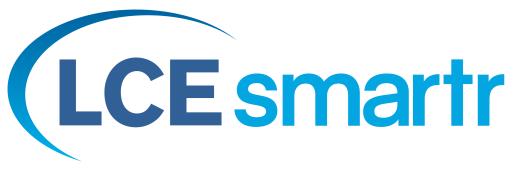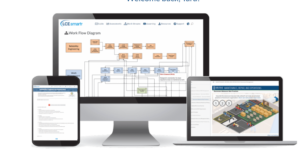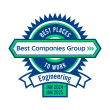A cheese manufacturer engaged with Life Cycle Engineering to apply a time-tested Reliability Excellence® (Rx) approach to meet its objectives: evaluate the current state of reliability and operations, increase asset uptime, increase production, reduce costs, and increase organizational effectiveness. These improvements were needed to meet growing customer demand and ensure the company’s competitive position in the marketplace, while minimizing capital investment.
This manufacturer wanted to address some specific concerns:
- Opportunities to reduce unplanned downtime and extend asset life
- Lack of efficiencies in the application of best-practice reliability and work management processes to support increased asset availability and production levels
- Improve data quality required for proactive asset management
- Lower unit cost to stay ahead of their competition
LCE’s 3-Wave approach to Reliability Excellence has helped this manufacturer address these areas and meet its overall objectives by applying a time-tested approach, processes and tools.
Waves 1 and 2: Building Awareness and Identifying Areas for Improvement
Waves 1 and 2 (Awareness and Assessment) of the 3-wave process helped the company’s employees develop a future-state vision, while gaining a better understanding of their current state. This phase prepared them for the implementation of improved asset reliability processes, systems, and technologies to achieve best practices.
Wave 1 consisted of an overview awareness session outlining the assessment process and Rx best practice objectives to a cross-functional group of team members. The Wave 1 sessions outlined a potential vision for the future and addressed “what’s in it for me” questions from team members.
In Wave 2, LCE experts led an Rx assessment leveraging LCE’s 29-element Rx Model to evaluate the maturity of reliability processes, people, technologies, and assets and compare them to best practices and/or benchmarks. LCE’s assessment approach analyzes the current state of an operation’s reliability performance, compares it to best practice and benchmarks, and provides the foundational information to develop a gap closure plan/timeline for execution and attaining the desired future state. This cheese company’s assessment included an implementation plan and schedule representing actionable recommendations for gap closure, including identification of early wins. It also identified requirements for education/training along with a set of Key Performance Indicators (KPI) by which to measure improvement progress. To help the company understand the potential impact of improvements, the assessment also included a cost/benefit business case.
Wave 3: Implementing Reliability Excellence to Apply Best Practices
Having executed the Wave 1 and 2 phases of our Rx program, the company worked with LCE’s experts to close the identified gaps and apply Rx best practices to achieve their goals: improved reliability, reduced maintenance costs, increased production capacity, and development of a culture of ownership through an engaged workforce.
Implementing Reliability Excellence Focuses on Four Work Streams and Produces Measurable Results
To lead and accomplish the implementation, LCE provided consultants, asset management specialists, and an eAM/CMMS consultant to help the manufacturing organization develop essential reliability processes and lead short-term eAM/CMMS improvements. LCE’s team also provided asset criticality analyses, collected asset data, supported development of key actions identified by the plant manufacturing focus teams, and coached/trained key manufacturing personnel using the Atlas product.
This support was provided in four key areas:
- Leadership and Organizational Change Management
- Work Management
- Materials Management
- Reliability Engineering
LCE experts coached multiple sites on reliability best practices and as implementation started, site teams began to make changes and improves from their current-state operations. Here are a few examples of improvements accomplished by the teams:
Work Management: An LCE consultant evaluated the company’s use of their CMMS, zeroing in on asset hierarchy structure and the effectiveness of data capture. Recommendations provided for better utilization of CMMS functionality, and revisions to asset hierarchy led to improved cost capture and asset criticality. The LCE consultant provided specific training and coaching on the changes and improvements, with particular emphasis on how to use the software to manage maintenance work and capture pertinent reliability data. As a result, CMMS open work requests for the sites were reduced from 30,000 to about one dozen. The CMMS work order backlog was reduced to an average of six crew weeks. And the company began using existing CMMS work order priorities.
Materials Management: An important achievement was implementing materials management best practices in support of work management. Using accurate reorder points to reduce stores inventory has the potential to save the company more than $400K. No-movement materials (more than five years in inventory) were identified, potentially saving more than $600K in state taxes if inventory is written off.
Reliability Engineering: A criticality tool was developed to support criticality analysis. More than 23,000 assets were assigned a criticality score by evaluating approximately 1,100 systems and common equipment types. This will help the company to dig deeper into the criticality of equipment within the top critical systems, and use refined data to shape equipment maintenance strategies. LCE’s experts also developed improved production loss reporting and a regular meeting structure for reviewing and assigning the top loss elimination projects. This resulted in $1.4M in downtime improvement projects.
Asset Management: The Reliability Excellence implementation scope included LCE Asset Management Specialists walking down plant equipment. The original scope was to spend three months conducting walk-down activities, then switch over to work on preventive maintenance plans and BOMs (Bills of Materials.) Because the walk-down results showed that a significant amount of equipment was not set up in the CMMS, the company decided to continue the walk-down work to cover 100% of the sites. This resulted in LCE helping the company upload more than 9,000 additional assets to their CMMS, increasing their equipment population by 63%.
These early results are examples from implementing their reliability improvement project. As this organization sustains their improvement efforts they are realizing continued benefits from implementing best practices. The company is well-positioned to meet future production demands in a cost-effective way.















